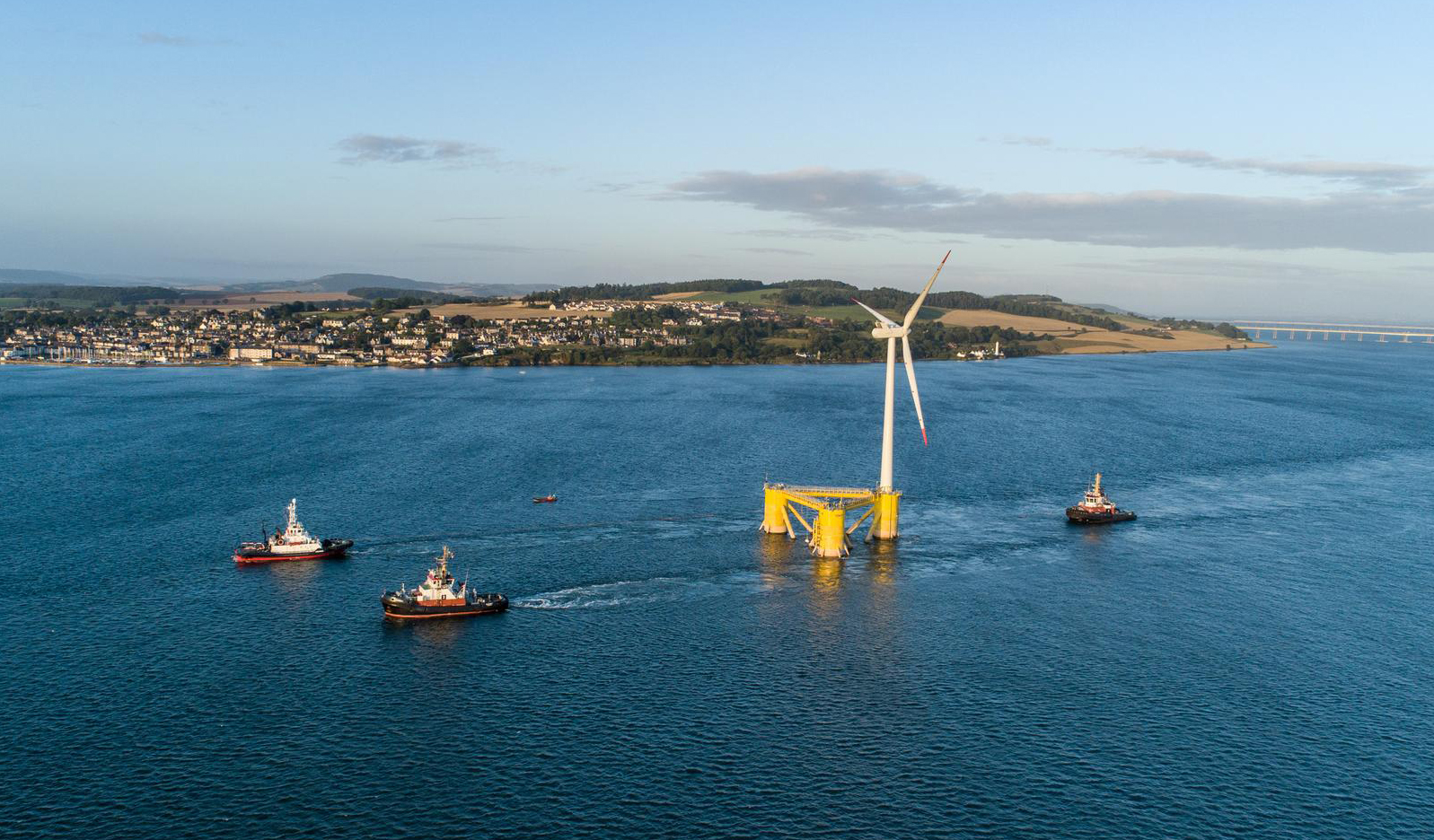What is a Net Zero target?
Since we proposed a definition of Net Zero in our Insight published in 2019, the Science Based Targets initiative (SBTi) has defined Net Zero targets for corporates as follows:
‘To reach a state of net zero emissions for companies implies two conditions:
- To achieve a scale of value-chain emission reductions consistent with the depth of abatement achieved in pathways that limit warming to 1.5°C with no or limited overshoot and;
- To neutralise the impact of any source of residual emissions that remains unfeasible to be eliminated by permanently removing an equivalent amount of atmospheric carbon dioxide.’
The SBTi has also published its Net Zero standard criteria for corporates as well as specific guidance for the financial sector.
Why set a Net Zero target?
Rigorous Net Zero targets carry a promise of strong climate action that is aligned with the Paris Agreement and limiting warming to 1.5°C.
At a time of climate emergency, setting out a robust pathway to achieving Net Zero emissions has become a new proxy for climate ambition.
For corporates, there are a number of benefits of setting a Net Zero target, which include:
- enhanced credibility and brand reputation
- the ability to drive innovation and create competitive advantage
- increased resilience given likely future regulation
- increased investor confidence
When should we set a Net Zero target?
Net Zero is not a passing trend. It is part of a long-term shift to decarbonise economies in response to a climate emergency.
In the build up to COP26 there is an increasing interest in Net Zero target setting. Schemes such as Race to Zero are aiming to build momentum and encourage decarbonisation of the economy through rallying businesses, cities, regions and investors to set Net Zero targets ahead of COP26. When considering which initiative to join, it is important to review the technical detail, as the requirements for each scheme can differ, to ensure there is alignment between scheme participation, a company’s own Net Zero commitments and strategy.
While innovation is still required in some sectors to achieve science-based targets that are in line with a 1.5°C trajectory, this should not prevent companies taking action now to minimise greenhouse gas emissions while also actively considering significant shifts in their business model.
Setting a target date for Net Zero emissions is an important step for a company, and the SBTi draft criteria states that the Net Zero target year shall be no later than 2050. Some companies are choosing to set a Net Zero target year earlier than 2050. Whilst greater ambition is encouraged, companies should also consider the feasibility of accelerating reductions in value chain emissions beyond 1.5 degree pathways and the potential financial implications of the required carbon removal.
What is the difference between carbon neutrality and Net Zero?
Carbon neutrality is defined by an internationally-recognised standard – PAS 2060 – which sets out requirements for the quantification, reduction and offsetting of greenhouse gas emissions.
In this standard, the definition of a carbon neutral footprint is a ‘condition in which during a specified period there has been no net increase in the global emission of greenhouse gases to the atmosphere as a result of the greenhouse gas emissions associated with the subject during the same period’.
There are a number of key differences between carbon neutrality and the SBTi draft definition of Net Zero:
- The boundary of a Net Zero target includes global scope 1, 2 and 3 emissions of the organisation, whereas carbon neutrality for an organisation only requires scope 1 and 2, with scope 3 emissions encouraged but not mandatory.
- The boundary of a carbon neutral claim can refer to a specific product or service instead of encompassing the whole organisation in the case of Net Zero.
- The reduction in reported emissions required differs. Net Zero targets must align to a 1.5°C science-based target, whereas the level of ambition of a carbon management plan for carbon neutrality is not specified.
- The approach to residual emissions differs, with specific greenhouse gas removals required for Net Zero targets, whereas carbon offsets are accepted for carbon neutrality.
What type of offsets can be used to achieve Net Zero?
Not all carbon offsets are the same. Oxford University has published The Oxford Principles for Net Zero Aligned Carbon Offsetting which provides a taxonomy categorising offsets into avoided emissions, emissions reduction and greenhouse gas removal offsets.
Avoided emissions offsets can come from projects such as replacing kerosene cook-stoves with solar stoves, as it avoids emissions that would have taken place if the cook-stoves had not been replaced.
Emissions reduction offsets can come from projects such as avoided deforestation and carbon capture and storage on industrial processes, where the project stops emissions being released into the atmosphere.
Greenhouse gas removal offsets can come from projects such as afforestation and direct air carbon capture and storage, where emissions are physically removed from the atmosphere.
A further distinction is made between long term-carbon storage (such as direct air carbon capture and storage) and short-term storage (such as afforestation).
There are a range of options for what should be done in the short-term. The Oxford Principles offsetting paper proposes corporates can take a progressive approach starting by offsetting in the current year with readily available offsets (such as avoided emissions) and slowly incorporating a greater proportion of greenhouse gas removal offsets – up to 100% offsetting with greenhouse gas removal offsets in the target year.
The SBTi has focused its requirements on final and interim targets relating to the amount of greenhouse gas removal undertaken, although it also recommends that companies start using other offsets in the short-term to complement the greenhouse gas removals.
Companies should prioritise decarbonisation of Scope 1, 2 and 3 emissions aligned to 1.5°C pathways over and above offsetting on their journey to Net Zero.
How do Net Zero targets differ from science-based targets?
Science-based targets set a trajectory for emissions reduction for Scope 1, 2 and 3 emissions, and do not allow a company to use offsets to achieve a reduction.
Net Zero targets should be accompanied by a science-based target aligned to 1.5°C, but also bring in an additional aspect of compensating for residual emissions using greenhouse gas removals. Greenhouse gas removals take remaining emissions from the atmosphere and permanently sequester them.
It is important to note that the greenhouse gas removal market is immature and companies are encouraged to make up-front investments to allow for guaranteed removal offsets in the Net Zero target year and build capacity in the greenhouse gas removal market.
Who should be engaged in setting and delivering a Net Zero target?
Operations and finance colleagues will be needed to advise on technical implementation, future energy prices and the price of greenhouse gas removals that the company may be committing to.
We also recommend you engage your communications colleagues to advise on how the target and your organisation’s progress against it, can be best be externally and internally communicated.
Engage with stakeholders at the earliest possible stage to ensure they are clear on the definition of a Net Zero target, and agree on what you are trying to do but also, crucially, how you are going to achieve it.
How should we communicate our Net Zero targets?
Net Zero targets demonstrate to your clients, employees and other key stakeholders how your organisation is transitioning towards a Net Zero economy and committing to ambitious action on climate change. But as more and more companies announce Net Zero targets your communication will be under increasing scrutiny, so it is vital that you are transparent about the work you will be doing to achieve Net Zero and that your definition of Net Zero is in line with the growing consensus and the SBTi definition (see above).
The SBTi Net Zero criteria includes requirements for how Net Zero targets should be communicated, which include the following:
- The Net Zero target should be publicly announced disclosing baseline year, boundary and target year. The announcement should also include the magnitude of emissions abatement and neutralisation.
- Companies should disclose the carbon removals used to achieve Net Zero in the target year
- Progress against targets should be reported on an annual basis, and include the following:
- Fully disaggregated emissions and removals in the GHG Inventory, broken down by Scope 1, 2 and 3
- Identifying documentation for all contractual instruments used for carbon removal targets
- Project information regarding all purchased and issued certificates and the approaches used to conduct carbon removal
- Details regarding the liability and impermanence risk of carbon storage
Publishing information about the target on your website will help support announcements in the media. We recommend keeping communications colleagues informed and ensuring they understand the work you are doing to mitigate any brand risk or greenwashing concerns.
What is the first step my company should take to setting a Net Zero target?
The first step is to measure your company’s Scope 1, 2 and 3 emissions and set a 1.5°C aligned science-based target for your own operations and value chain. When setting a 1.5°C aligned science-based target you should consider the feasibility and decarbonisation initiatives necessary to meet the trajectory before committing to a Net Zero target.
You can then consider the options for setting a target to go further, bringing together your internal stakeholders and identifying whether a Net Zero or carbon neutral target is best for your organisation.
Contact us today to start your Net Zero journey
Find out more
Explore more about our work on Net Zero
Net Zero: an ambition in need of a definition (Insight article)





